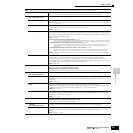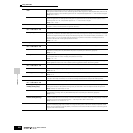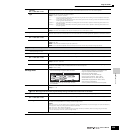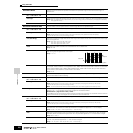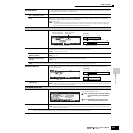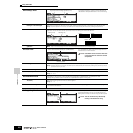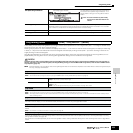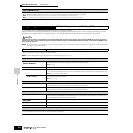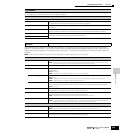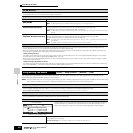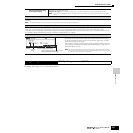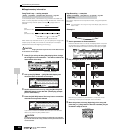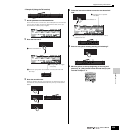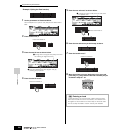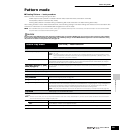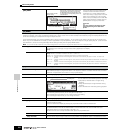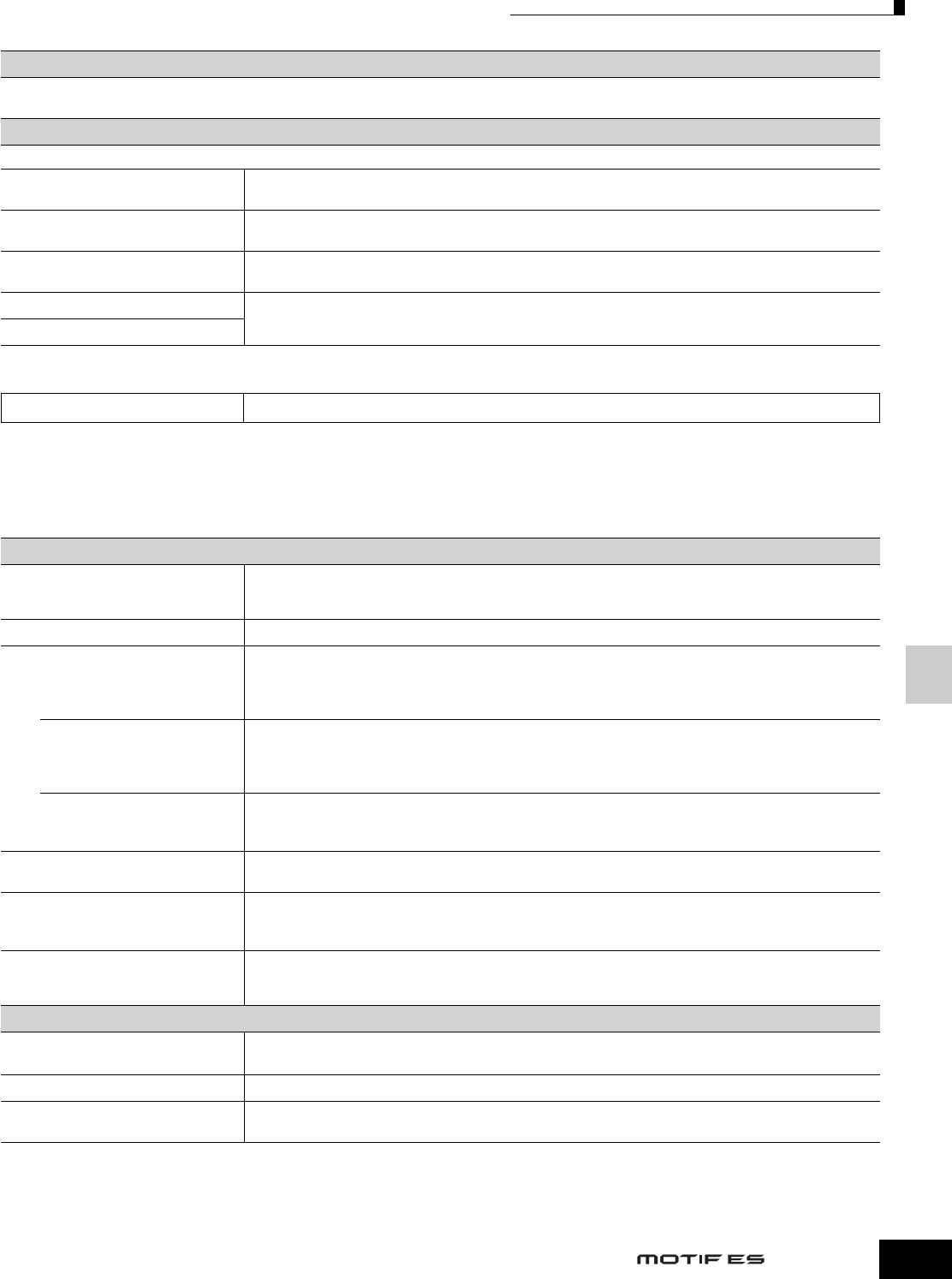
Reference Song Mode
Song Mixing Edit mode Part Edit
235
Owner’s Manual
These parameters are for editing the individual Parts that make up a Song Mixing. Press the [F6] button to switch among the various Part
displays — the display for Parts 1 - 16 to which the internal Voices are assigned, the display for Multi-part Plug-in Parts (17 - 32) to which the
PLG100-XG voices are assigned, and the display for Plug-in Parts (PLG1 - 3) to which the Plug-in Voices of the single part Plug-in board are
assigned.
n Please note that the Multi-Part Plug-in Part (17~32) settings apply not to one individual Song but to all 64 Songs.
[F5] AUDIO IN
From this display, you can set parameters related to the Audio Input Part in the Song mode.
The parameters are the same as in Performance Common Edit. See page 214.
[F6] EFFECT
n For information on the effect connections in the Song mode, see page 180.
[SF1] CONNECT
This display gives you comprehensive control over the effect connections.
The parameters are the same as in Performance Common Edit. See page 215.
[SF2] INS SW (Insertion Switch)
The Insertion Effects can be applied to up to eight parts. This display lets you set to which parts the Insertion Effects
are applied.
[SF3] PLG EF (Plug-in Effect)
This display lets you set the Plug-in Insertion Effect related parameters when the Effect Plug-in Board PLG100-VH
has been installed. For details on each parameter, refer to the Owner’s Manual included with the PLG100-VH.
[SF4] REVERB
The number of parameters and values available differs depending on the currently selected effect type. For more
information, see the Effect Type List in the separate Data List booklet.
[SF5] CHORUS
Part Edit
[SONG] → Song selection → [MIXING] → [EDIT] → Part selection
[F1] VOICE
[SF1] VOICE
Determines the Voice for each Part. For details, see page 102.
n When the cursor is located on the Bank, you can select a Voice (with the exception of Sample Voices, Mixing Voices, and
Voices of Multi-part Plug-in Parts) via the method explained in the Quick Guide on page 102.
[SF2] MODE
Mono/Poly Determines the playback method of the Voice for each Part — monophonic (single notes only) or polyphonic
(multiple notes).
Settings: mono, poly
n This parameter is not available for the part to which a Drum Voice is assigned.
ArpSwitch (Arpeggio Switch) Determines whether Arpeggio is on or off for the currently selected Part.
Settings: on, off
n Arpeggio Switch is applied to only one Part at the same time. It cannot be applied to multiple Parts simultaneously.
n Arpeggio Switch is not available for the Multi-part Plug-in Parts 17~32.
ReceiveCh (Receive Channel) Determines the MIDI receive channel for the selected Part. Since MIDI data may be coming from many channels at
once, you should set this to match the particular channel over which the desired controlling data is being sent.
Settings: 01~16, off
[SF3] LIMIT
From this display you can determine the note range and velocity range for each Part.
The parameters are the same as in Performance Part Edit. See page 216.
[SF4] PORTA (Portamento)
Determines the Portamento parameters for each Part.
The parameters are the same as in Performance Part Edit. See page 216.
n The Mode setting is not available for the Multi Plug-in parts 17-32 and the Plug-in parts 1-3.
[SF5] OTHER
Same as in Performance Part Edit. See page 217.
n For Multi-part Plug-in Parts 17 - 32 and Plug-in Parts 1 - 3, Pitch Bend Upper and Lower become a single parameter: PB
Range. Upper and Lower values cannot be set independently for Plug-in Parts. See page 164.
[F2] OUTPUT
[SF1] VOL/PAN (Volume/Pan)
Same as in Performance Part Edit. See page 217.
n The Voice Element Pan setting is not available for Multi-part Plug-in Parts 17 - 32 and Plug-in Parts 1 - 3.
[SF2] EF SEND (Effect Send)
Same as in Performance Part Edit. See page 217.
[SF3] SELECT (Output Select)
From this display you can assign individual Parts to sound from independent output connectors (jacks).
The parameters are the same as in Performance Part Edit. See page 218.



